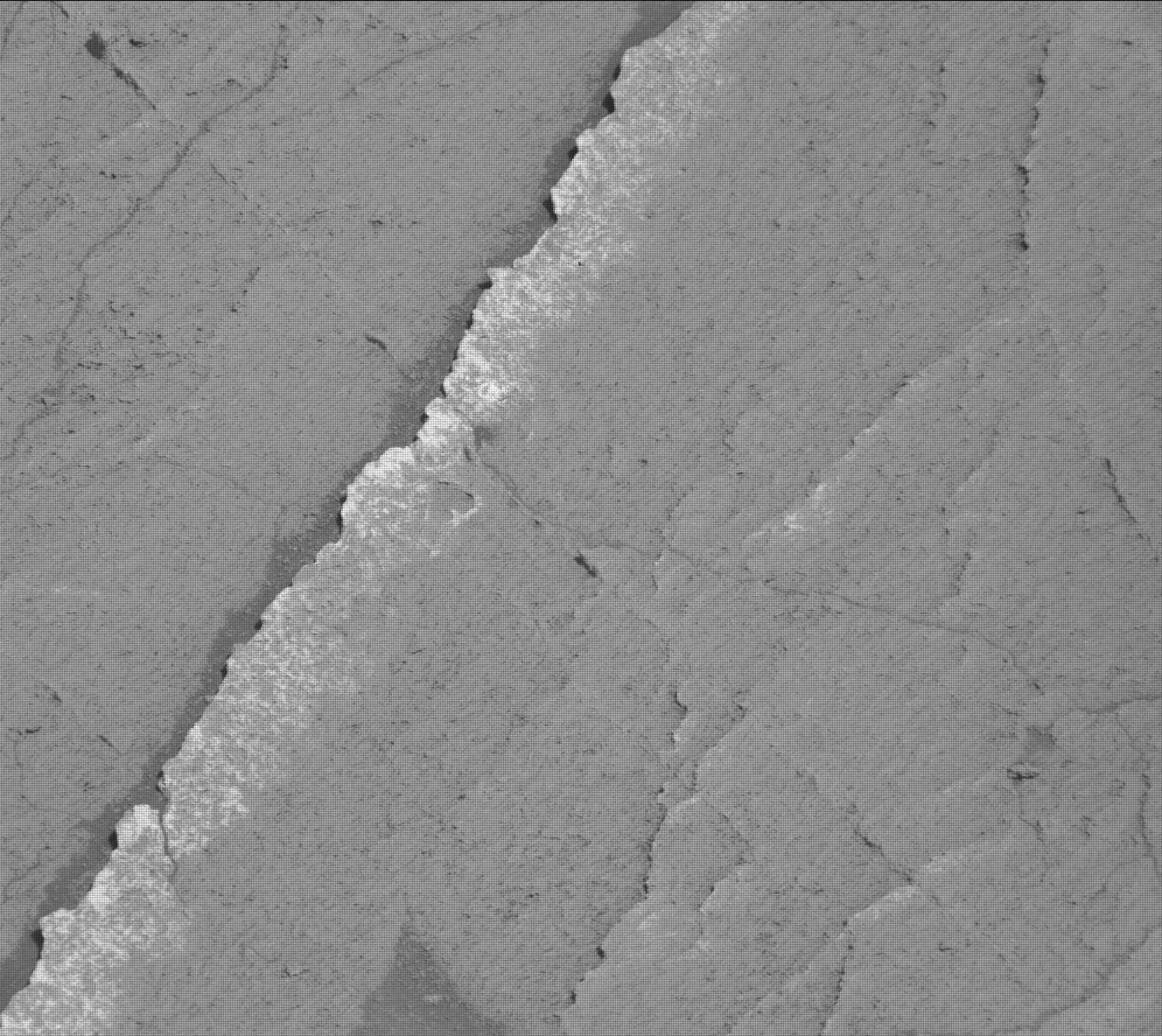2 min read

Over the last two weeks, Curiosity has thoroughly interrogated the “Maria Gordon” drill hole and sample. Mastcam multispectral and ChemCam passive observations probed the mineralogy of the drill cuttings, and ChemCam LIBS measured the chemistry of the bedrock in three dimensions. CheMin analyzed the sample mineralogy, and SAM investigated the volatile and organic content of the sample. To extract as much knowledge as possible from a resource as precious as a drill sample, tosol it was time for MAHLI and APXS to get in on the action. The sol started with Curiosity liberating (or, less elegantly, dumping) the remaining sample from the drill so that MAHLI and APXS could image and analyze it. MAHLI also imaged the drill cuttings, which have moved relatively little since they were formed on Sol 3229, to help plan APXS placement over the cuttings in a future plan to best effect. Adding data from the contact science instruments will help us build a more complete story of the rocks of this section of Mount Sharp.
Even with the focus on the drill hole and sample today, there was still time to acquire observations of our surroundings. ChemCam will acquire chemistry data from “Megaltih," one of the many parallel, linear ridges that cut across the bedrock of this area (and similar to the one in the image above, “Falls of Shin” from Sol 3242). ChemCam will also use RMI to image a new section of the spectacular layering within “Rafael Navarro Mountain.” REMS and RAD will keep their fingers on the pulse of the Gale environment, and DAN will execute both passive measurements and active soundings of the subsurface during the sol. Navcam will acquire its trifecta of atmospheric measurements: a dust devil survey, a cloud movie, and a line of sight observation to measure the dust in the atmosphere.
Written by Michelle Minitti, Planetary Geologist at Framework







